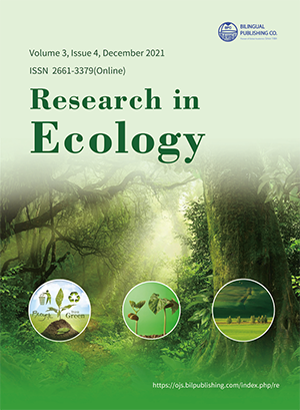
Principal-agent Relationships: A Note on Biomass Depletion
DOI:
https://doi.org/10.30564/re.v3i4.4153Abstract
Public authorities frequently mandate public or private agencies to manage their renewable natural resources. Contrary to the agency, which is an expert in renewable natural resource management, public authorities usually ignore the sustainable level of harvest. In this note, we first model the contractual relationship between a principal, who owns the renewable natural resource, and an agent, who holds private information on its sustainable level of harvest. We then look for the Pareto-optimal allocations. In the situation of an imperfect information setting, we find that the Pareto-optimal contracting depends on the probability that the harvesting level stands outside the sustainability interval. The information rent held by the agent turns out to be unavoidable, such that stepping outside the sustainability interval implies the possibility of depletion of the renewable natural resource. This, in turn, compromises the maintenance of the ecological balance in natural ecosystems.
Keywords:
Bioeconomics, Natural resource management, Sustainability, Principal-agent modelReferences
[1] Addison, T., Roe, A., 2018. Extractive Industries: The Management of Resources as a Drivers of Sustainable Development. A study prepared by the United Nations University World Institute for Development Economics Research (UNU-WIDER). Oxford University Press, Oxford.
[2] Akerlof, G., 1970. The Market for Lemons: Quality Uncertainty and the Market Mechanism. The Quarterly Journal of Economics. 84, 488-500.
[3] Barkaoui, A., Dragicevic, A., 2016. Nash Bargaining and Renegotiation with Social Preferences: Case of the Roundwood Log Supply Contracts in the French Timber Market. Forest Policy and Economics. 69, 90-100.
[4] Bogle, T., Van Kooten, C., 2013. Options for Maintaining Forest Productivity after Natural Disturbance: A Principal-Agent Approach. Forest Policy and Economics. 26, 138-144.
[5] Dragicevic, A., 2019. Comparing Forest Governance Models against Invasive Biological Threats. Journal of Theoretical Biology. 462, 270-282.
[6] Laffont, J.J., Martimort, D., 2002. The theory of Incentives: The Principal-Agent Model. Princeton University Press, Princeton.
[7] Garcia, S., Thomas, A., 2003. A. Regulation of Public Utilities under Asymmetric Information. Environmental and Resource Economics. 26, 145-162.
[8] Garcia, S., Petucco, C., Thorsen, B., Vedel, S., 2021. Modelling the Choice Between Multiple-Use vs. Specialised Forest Management and its Impact on Forest Management Costs. Environmental Modeling and Assessment. 26, 1-18.
[9] Martimort, D., Stole, L., 2002. The Revelation and Delegation Principles in Common Agency Games. Econometrica. 70, 1659-1673.
[10] Rogerson, W., 1985. Repeated Moral Hazard. Econometrica. 53, 69-76.
[11] Yiwen, Z., Kant, S., Liu, J., 2019. Principal-Agent Relationships in Rural Governance and Benefit Sharing in Community Forestry: Evidence from a Community Forest Enterprise in China. Forest Policy and Economics. 107, 101924-1-8.




 Arnaud Z. Dragicevic
Arnaud Z. Dragicevic





